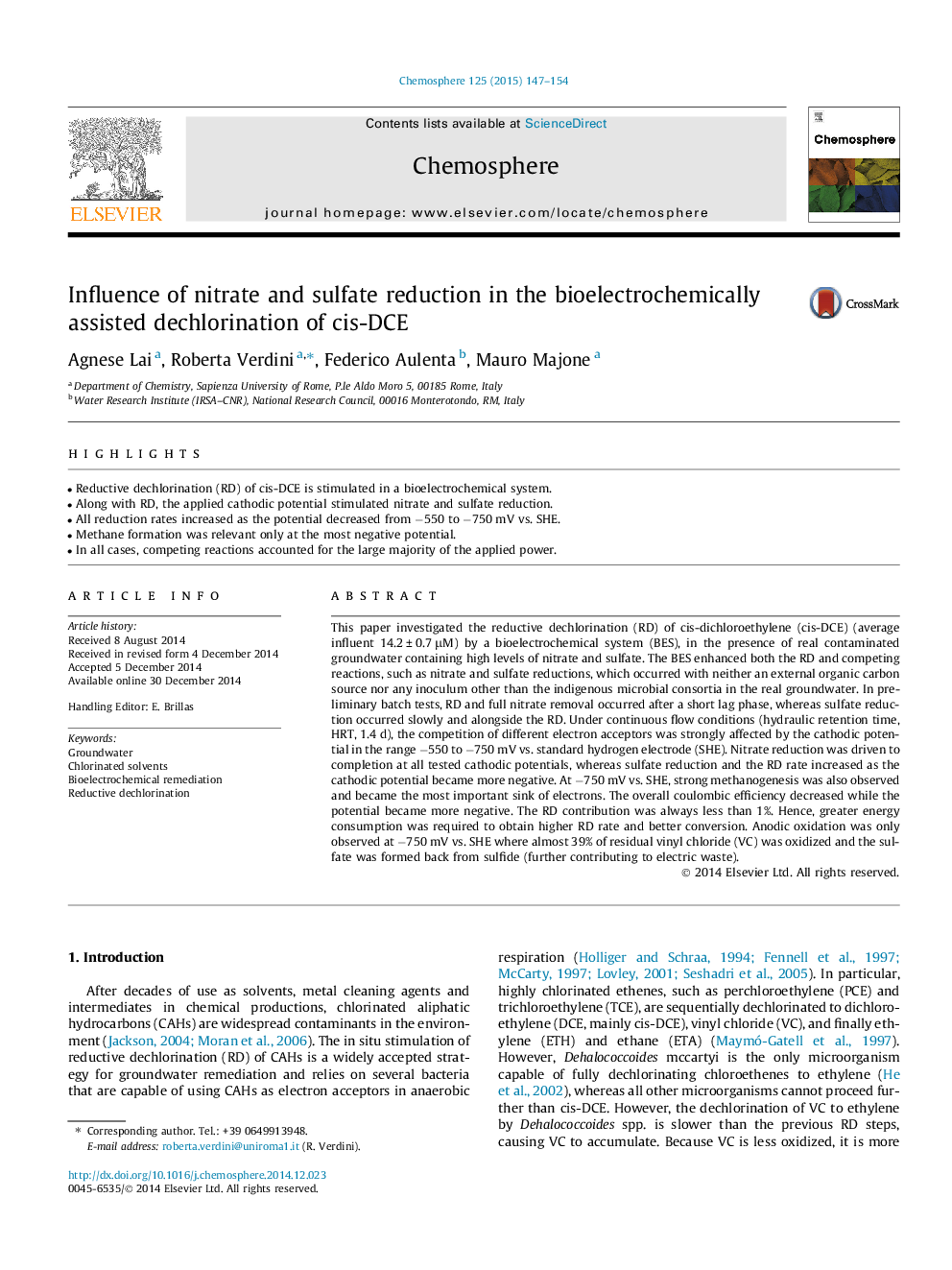| کد مقاله | کد نشریه | سال انتشار | مقاله انگلیسی | نسخه تمام متن |
|---|---|---|---|---|
| 4408353 | 1618846 | 2015 | 8 صفحه PDF | دانلود رایگان |

• Reductive dechlorination (RD) of cis-DCE is stimulated in a bioelectrochemical system.
• Along with RD, the applied cathodic potential stimulated nitrate and sulfate reduction.
• All reduction rates increased as the potential decreased from −550 to −750 mV vs. SHE.
• Methane formation was relevant only at the most negative potential.
• In all cases, competing reactions accounted for the large majority of the applied power.
This paper investigated the reductive dechlorination (RD) of cis-dichloroethylene (cis-DCE) (average influent 14.2 ± 0.7 μM) by a bioelectrochemical system (BES), in the presence of real contaminated groundwater containing high levels of nitrate and sulfate. The BES enhanced both the RD and competing reactions, such as nitrate and sulfate reductions, which occurred with neither an external organic carbon source nor any inoculum other than the indigenous microbial consortia in the real groundwater. In preliminary batch tests, RD and full nitrate removal occurred after a short lag phase, whereas sulfate reduction occurred slowly and alongside the RD. Under continuous flow conditions (hydraulic retention time, HRT, 1.4 d), the competition of different electron acceptors was strongly affected by the cathodic potential in the range −550 to −750 mV vs. standard hydrogen electrode (SHE). Nitrate reduction was driven to completion at all tested cathodic potentials, whereas sulfate reduction and the RD rate increased as the cathodic potential became more negative. At −750 mV vs. SHE, strong methanogenesis was also observed and became the most important sink of electrons. The overall coulombic efficiency decreased while the potential became more negative. The RD contribution was always less than 1%. Hence, greater energy consumption was required to obtain higher RD rate and better conversion. Anodic oxidation was only observed at −750 mV vs. SHE where almost 39% of residual vinyl chloride (VC) was oxidized and the sulfate was formed back from sulfide (further contributing to electric waste).
Journal: Chemosphere - Volume 125, April 2015, Pages 147–154